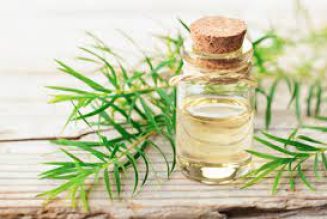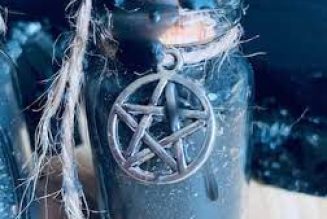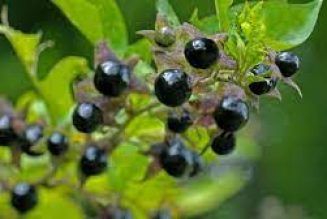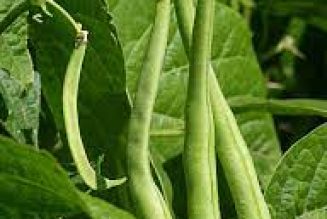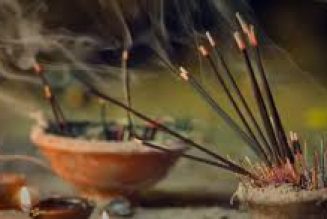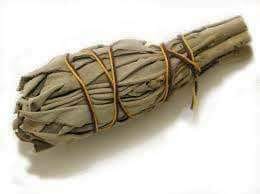
Gender: Masculine
Planetary Association: Jupiter
Element: Earth
Several different planets are connected magickally with this herb by different sources. For instance, some, including Culpeper (and those who follow him, such as Cunningham), consider this a Jupiter herb, and it is often a substitute for the very Jovian frankincense in terms of purification. Also, its leaves contain tin, the planetary metal for Jupiter. Christopher Penczak includes it in his list of Moon herbs, perhaps because of the light bluish “bloom” this magick herb has when dried; this bloom occurs on many Moon plants. However, I will go with those in magickal practice who see this as an Earth Elemental herb, because of its smell, and because this makes more sense with its Wiccan association with Samhain and with the Crone. Elemental Earth herbs resonate with the body, caves, chasms, silence, graves, fields, and the Hermit’s Path. This feels real Crone and Samhain to me.
This Earth herb in particular is good for slaying the ego. Emotionally, sage helps build strength and courage, and as an Earth herb, is an important aid in grounding oneself. Sage is great for cleansing an area of all that is negative or left over. It is perfectly okay to smudge with this sage instead of white sage. In fact, if you are working in some path that derives from West European magick, it makes more sense to smudge with this sage. Some also recommend sage for protection from negative magick. It can also be helpful in burying or hiding aspects about oneself, as in making a glamour, in the reverse – digging up aspects, and so exploring the psyche or finding lost objects. According to Ficino, a certain bird is generated from the putrefaction of sage and which draws its life from the life of the world. This sounds not so much like as myth as an alchemical metaphor. You make a decent sage incense by grinding it 2:1 with white sandalwood.
Main magical uses: cleansing, healing, longevity, money, passion, prosperity, psychic development, psychic protection, purification, wisdom Other magickal uses: business, clairvoyance, consecration, divination, domestic harmony, energy, happiness, inspiration, keeping secrets, knowledge, love, Mabon, meditation, peace, retention, Samhain, tranquility, weddings, Yule Lore: The kind of sage found in the kitchen was brought to the New World by colonists, and was especially popular among Germans. It should not be confused with sagebrush.
Sage has long been burned to purify and cleanse a space. The ancients burned dried sprigs of sage in temples and during religious rituals. The Greeks and Romans wrote that the smoke imparted wisdom and mental acuity. In the tenth century, Arab physicians said that sage brought about immortality, or at the very least, a long and healthy life. In England, seventeenth-century servants of the royal family scattered a blend of sage and lavender on the floors at court to help disguise the aroma of day to day life.
In magic, carry sage leaves in your wallet or purse to promote financial gain. Burn leaves to increase wisdom or gain guidance from your spirit guide (be warned – burning sage does smell similar to marijuana, so keep that in mind if you think the neighbors might be inquisitive). Make a wish and write it on a sage leaf, and then hide it beneath your pillow – if you dream about your wish over the next three nights, your wish will come true.
In addition to its medicinal and magical uses, sage makes a great addition to your kitchen pantry. Use it to season fish or chicken dishes, or toss fresh leaves into a green salad.
The name Salvia derives from the Latin ‘salveo’, which means ‘to heal’. Indeed this herb is highly regarded for its healing qualities. An ancient proverb states, “Why should a man die who has sage in his garden?”. The ancient Greeks used it to treat consumption, ulcers and snake bites.
The Ancient Romans considered sage to be a sacred herb and followed an elaborate ceremony when harvesting it. A sage gatherer would use a special knife (not made of iron as it reacts with the sage), have to have clean clothes and clean feet and a sacrifice of food would have to be made before he could begin. The Romans would use it for toothpaste; they also believed it to be good for the brain, senses and memory.
Sage is a hardy perennial of the mint family. Purplish flower spikes appear in the summer. Many species become shrubby and woody. Some are variegated, providing additional interest in the garden. Sage has a wonderful scent and a long history of uses.
History and Folklore
The name Salvia derives from the Latin word Salveo, “to heal” or “to save” (more like, to salve, as in, apply a salve).
It has long been used in healing. An old proverb says “why should a man die who has sage in his garden?”. It was used in the Middle Ages to treat fevers, liver disease and epilepsy. In England, the tea drunk as a healthful tonic. It was also believed to strengthen the memory. An old English custom states that eating Sage every day in May will grant immortality. It was also said that a woman who ate sage cooked in wine would never be able to conceive and its fresh leaves were said to cure warts.
It is said that where sage grows well in the garden, the wife rules and that sage will flourish or not depending on the success of the business of the household.
During the Middle Ages, sage was used to mask the taste of rancid meat. Perhaps its antibacterial action also protected people from dying of rancid meat…
The Romans regarded sage quite highly and much sacrifice and ceremony was associated with its harvest. They believed it stimulated the brain and memory and used it to clean their teeth.
The Dutch in the 17th century traded Sage for tea with the Chinese.
Propagation
This lovely perennial enjoys sun and well-drained soil. Keep fertilizer to a minimum. Most varieties are winter hardy. Sow seeds up to two weeks before the last danger of frost. Plants grown from cuttings do better than those grown from seed.
Russian sage ads an airy cloud of purple to the garden.
Common sage (garden sage, culinary sage) gets woody and bushy and is really neat-looking. Give it its own corner of the garden because it will take over.
White sage grows only in warm, arid regions. It requires low humidity and a great deal of sun and will not survive a winter frost so it must be grown indoors in northern regions, though it is not fond of pots. This herb has been over-collected in the wild, so if you use it and you can grow it; do.
Harvesting & Storage
Harvest sage lightly for the first year to allow the plant to get established. Then large bunches can be harvested and hung to dry. The flavor is better if you freeze sage rather than dry it, though it does retain its flavor well when dried. Store dried in a sealed glass container in a cool, dark area.
Prune garden sage after it flowers and then don’t harvest anymore until spring so the plant has a month or two to recover and survive the frost.
Magical Attributes
Sage is masculine in nature and associated the the element of air and the planet Jupiter.
Sage is sacred to the Greek Zeus and Roman Jupiter. It is also a symbol of the Virgin Mary.
White sage Salvia apiana is sacred in many Shamanic and Native American belief systems and is used in smudging, and other, ceremonies to purify the body. Smudge sticks made of white sage are often found in New Age shops and kits are heavily marketed to modern magical practitioners. Unfortunately, white sage is difficult to grow in captivity and is largely wild-crafted, which threatens native populations and since it’s really not part of European-based traditions, we really don’t need it. Our European spiritual ancestors burned a lot of different herbs in their practices, but white sage was not among them. If you feel the need to use sage, garden sage is a suitable substitute1. Indeed, most Salvia species can be burned by the non-indigenous witch and we can leave white sage to those to whom it is truly sacred. If you must have it, try to grow it yourself.
Sage is used in magical workings for immortality, longevity, wisdom, protection and the granting of wishes.
Sage is also believed to help alleviate sorrow of the death of a loved one.
To make a wish, write your wish on a sage leaf and sleep with it under your pillow for three days and then bury it.
Add sage to mojo bags to promote wisdom and to overcome grief.
Burn sage at funeral and remembrance ceremonies to help relieve the grief of the mourners.
Household Use
Sage makes a nice rinse for dark hair.
Sage’s attractive leaves hold their shape and fragrance well when dried and are an attractive addition to dried arrangements and potpourri.
Store dried sage in the same place as you store your potatoes to help them keep longer.
Healing Attributes
Sage tea has antiseptic qualities and makes a good gargle for sore throats.
Sage may boost insulin action, and therefore, a daily cup of tea may be helpful for those with diabetes. Use one or two teaspoons of dried sage leaves to one cup of boiling water.
Culinary Use
Only Salvia officianalis is suitable for culinary use
Sage aids in the digestion of fatty foods and is therefore good for seasoning meats, especially pork. It’s also famously useful for stuffing poultry. It is also awesome in various bean and pork dishes, like split pea soup and vegetarian bean dishes.
Sage blossoms are good in salads or floated on top of soups.
Pineapple sage is good in fruit drinks, salads and with ham.
Common sage blends well with the flavors of balsamic vinegar, basil, bay-laurel, black pepper, cream cheese, garlic, lavender, lemon, mushrooms, onions, oregano, rosemary, thyme and red wine.
Additional Notes
Most sage grows like crazy but the most commonly used sage in spiritual practice, white sage, grows only in the American Southwest and is being over-collected in the wild. In my experience, garden sage works just as well and grows quite easily just about anywhere.
